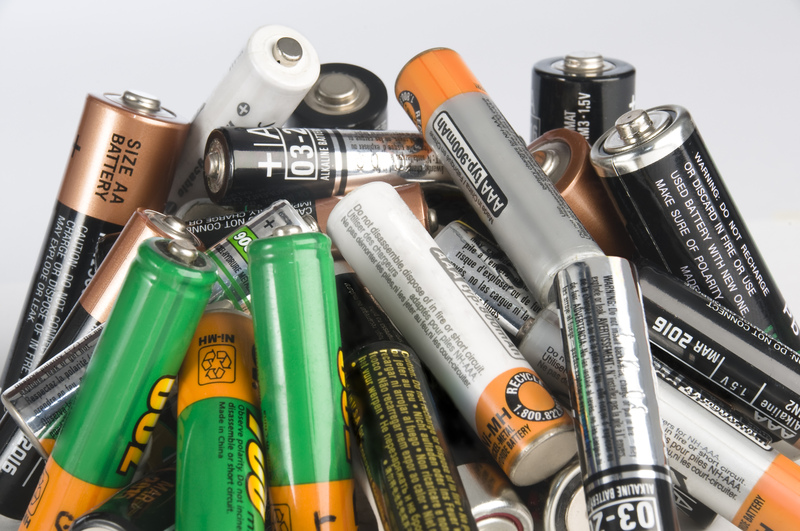The Dos and Don'ts of Smart PPE Waste Disposal
In the wake of the COVID-19 pandemic and increasing focus on environmental safety, PPE waste disposal has become a critical aspect of both personal and communal health. Whether you're a healthcare professional, a company managing industrial safety, or an individual using face masks and gloves, understanding the smart methods of disposing of personal protective equipment (PPE) protects not just you, but the planet. This comprehensive guide covers everything you need to know about the dos and don'ts of PPE waste disposal, emphasizing responsible habits and modern practices.
Understanding PPE and Its Environmental Impact
Personal Protective Equipment (PPE) includes items such as masks, gloves, face shields, gowns, and even shoe covers used to protect users from health and safety risks. With billions of PPE items used globally each day, especially in the aftermath of recent health crises, improper disposal is contributing to widespread environmental pollution and public health concerns.
Why Does PPE Waste Matter?
- Microplastics Pollution: Many PPE products, especially sterile gloves and masks, are made from plastics that do not break down easily, leading to long-term litter in landfills and oceans.
- Potential Viral Transmission: Used PPE can carry infectious agents, posing risks to waste handlers and the general public if not handled smartly.
- Impact on Wildlife: Discarded PPE causes choking, entanglement, and even starvation in animals mistaking these items for food.

PPE Waste Disposal: The Smart Approach
Smart PPE waste disposal refers to safe, environmentally responsible, and health-conscious methods of discarding personal protective equipment. The goal is to minimize harm, maximize hygiene, and promote sustainability. Let's explore the key dos and don'ts in detail.
The Dos of Smart PPE Waste Disposal
1. Do Segregate PPE Waste from Regular Waste
- Always separate used PPE (like masks and gloves) from your routine waste to prevent cross-contamination and to simplify handling by waste management workers.
- Use designated biohazard or PPE disposal bins, commonly found in hospitals, clinics, and some public places.
2. Do Seal PPE Waste Securely
- Before disposal, place all used PPE in a plastic bag, tie it securely, and then put it into the appropriate waste container.
- This step minimizes the chance of exposure to infectious agents, especially for households isolating due to illness.
3. Do Follow Local Guidelines and Color Codes
- Check with your municipality or facility for local PPE waste management protocols--many cities have specific color-coded bags (such as yellow or red) for PPE waste.
- Adhering to these guidelines streamlines sorting and reduces the risk of improper disposal.
4. Do Use Dedicated PPE Waste Bins
- Install bins or containers specifically labeled for PPE waste at entrances, exits, and high-traffic areas in workplaces, schools, or public spaces.
- Ensure bins are covered and placed in accessible yet secure locations.
5. Do Wear Gloves When Disposing PPE Waste
- Always protect yourself when handling used PPE by wearing disposable gloves.
- After disposal, immediately remove gloves and wash your hands thoroughly with soap and water or use sanitizer.
6. Do Promote Awareness and Training
- Educate staff, family members, or the community about smart PPE waste disposal methods--through signage, posters, and short training sessions.
- Awareness is key to preventing lapses that might endanger health or the environment.
7. Do Explore Recycling Options (Where Possible)
- Some innovative programs recycle used masks and gloves for construction materials or energy. Check if such schemes operate in your area and participate when feasible.
- Never recycle contaminated PPE with ordinary household recyclables unless specific instructions indicate it's acceptable.
8. Do Minimize Unnecessary PPE Usage
- Using PPE judiciously reduces waste at source. Where safe, consider reusable or washable alternatives (like cloth masks) instead of disposables.
The Don'ts of PPE Waste Disposal
1. Don't Litter PPE in Public Places
- Never throw used masks, gloves, or face shields on roads, parks, or beaches. This practice is hazardous to health and the environment.
- Improper littering increases the workload for sanitation workers and risks spreading infection.
2. Don't Mix Contaminated PPE with General Recyclables
- Unless specifically permitted, do not discard used PPE in recycling bins for materials like paper or plastic bottles.
- Contaminated PPE can compromise entire batches of recyclables, making them unsafe or unusable.
3. Don't Try to Reuse Single-Use PPE
- Single-use items are not designed for repeated use. Reusing disposable PPE increases the risk of infection and may reduce their effectiveness.
4. Don't Burn PPE Waste Outdoors or at Home
- Burning generates toxic fumes harmful to humans, animals, and the environment. This method is neither safe nor eco-friendly.
- Only approved medical waste incinerators are equipped to handle PPE waste safely.
5. Don't Flush PPE Down Toilets or Sinks
- Items like masks and gloves clog plumbing and wastewater systems, creating additional hazards and repair costs.
- Always dispose of PPE in lined waste bins -- Flushing is never an option.
6. Don't Handle PPE Waste with Bare Hands
- Avoid direct contact with used PPE--always wear gloves or use a tool to handle waste and wash hands thoroughly afterwards.
7. Don't Delay Disposal for Extended Periods
- Letting used PPE accumulate in open places at home or work can increase health hazards. Dispose of items promptly in designated containers.
Smart PPE Waste Disposal at Workplaces
The workplace setting--especially in healthcare, laboratories, manufacturing, and retail--demands extra precautions for PPE waste management. Here's a focused look at best practices:
Steps for Smart PPE Disposal in Offices & Industrial Spaces
- Conduct a risk assessment: Identify locations and types of PPE waste likely to be generated.
- Install multiple disposal points: Reduce the temptation for staff to litter or use incorrect bins.
- Regularly empty bins: Prevent overflow and exposure.
- Ensure cleaning staff are provided with PPE: Protect those handling waste.
- Display clear signage: Use images and text in multiple languages for maximum reach.
- Audit disposal compliance: Periodically review practices and provide feedback or corrections as needed.
Community and Municipal Responsibilities in PPE Waste Disposal
Communities and local governments play a huge role in ensuring safe PPE waste management at a broad scale. Here are some of the steps that can make a significant difference:
- Provision of PPE bins in public areas: Parks, bus stops, and markets should have special containers for disposable masks and gloves.
- Information campaigns: Collaborate with media, schools, and businesses to educate citizens about responsible disposal and its impact.
- Effective collection and treatment: Use specialized systems to handle medical and PPE waste differently from domestic refuse.
- Support recycling research: Participate or fund studies aimed at developing safe PPE recycling solutions.
Innovative Solutions for PPE Waste Management
Modern problems require modern solutions! Here are some smart PPE disposal innovations on the rise:
- PPE recycling initiatives: Some companies are converting used masks into road building materials, plastic pellets, or even energy through pyrolysis.
- Compostable PPE: Emerging products made from biodegradable fibers address both protection and eco-friendliness.
- Smart disposal bins: Sensor-activated bins reduce the need for touch, and some even use UV light to disinfect disposed items.

Frequently Asked Questions (FAQ) on PPE Waste Disposal
Is it safe to dispose of masks and gloves in regular trash?
Yes, but only if no specific PPE waste system is available in your locality. Ensure you seal contaminated PPE in its own bag to prevent contact or leakage.
Can I recycle PPE at home?
Normally, used PPE is not recyclable by home systems due to contamination and material types. Only participate in official programs designed for mask or glove recycling.
What should I do if I see PPE waste littered in public?
Notify local authorities or municipal cleaners. Do not pick up the waste with bare hands. If you choose to help, use gloves and immediately dispose of both the PPE and gloves in a safe manner.
Final Thoughts: Build Habits for Smart PPE Waste Disposal
As the world adapts to ongoing health risks and strives for sustainability, PPE disposal best practices are everyone's responsibility. By following the dos and avoiding the don'ts outlined here, you can help minimize environmental impact, protect human health, and set a positive example for your community.
Remember: Smart PPE waste disposal isn't just about getting rid of waste--it's a vital part of modern public hygiene and planetary stewardship. Make your disposal habits count!
